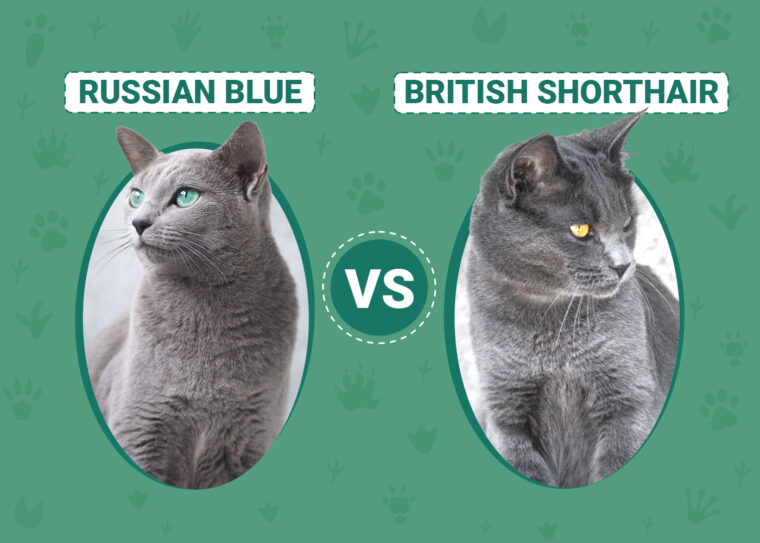
You’d be forgiven for thinking you’re seeing double because the Russian Blue and British Shorthair are similar-looking cats. With their blue fur, round faces, and big eyes, they look like teddy bears. However, some traits and quirks are unique and set the two purebred kitties apart.
So, if you’re thinking about getting one of these beautiful cats but are unsure which one would work best for your family, keep reading. We’ve collected everything you’ll need to know about the Russian Blue and British Shorthair, from their physical differences to their unique personalities.
Visual Differences
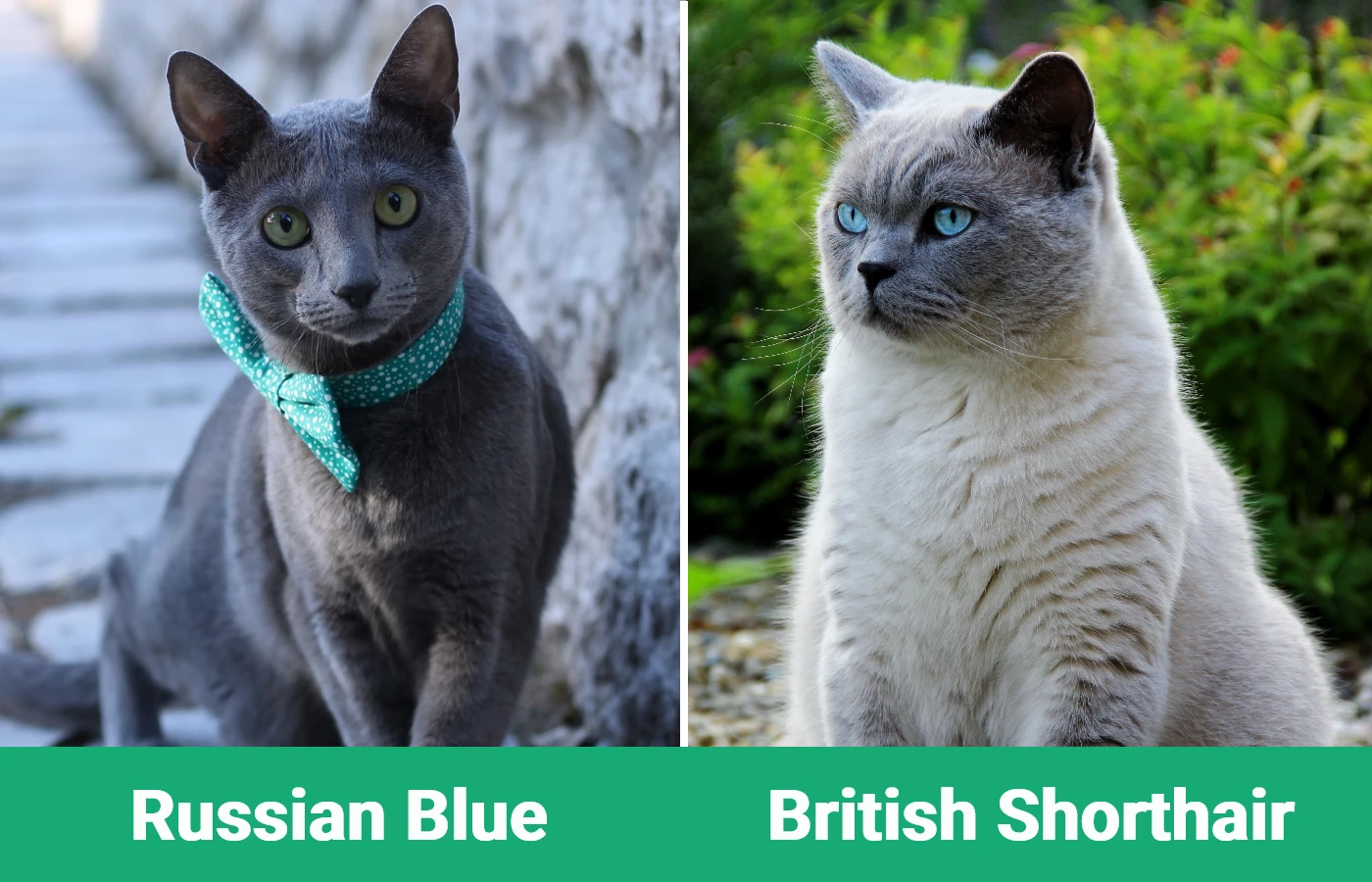
At a Glance
Russian Blue Overview

Some of the Russian Blue’s history has been lost through the years, but it’s thought they originated in northern Russia, on Archangel Island (Arkhangelsk). They’re also known as Archangel Blues.
Russian Blues became popular with Russian czars and royalty and were shipped to Europe in the late 1800s. Their travels took them to Great Britain, where they were among the first contestants to appear in the first cat shows.
It wasn’t until the early 1900s when they arrived in the United States, and they failed to become very popular until after the Second World War. The Russian Blue was officially recognized by the Cat Fanciers’ Association (CFA) in 1949.
Personality
The Russian Blue is a sociable, loyal, and clingy cat that loves to be the center of attention. They are very loving with their families and expect the same affection back, but they bond closely with one family member in particular over others. They can be shy, and you might find them avoiding large crowds if you have several people over.
Russian Blues appreciate their alone time and seek refuge for a little peace and quiet. So, while they will be waiting at the front door for you to return home, they won’t mind you leaving the house for work or to go out with friends as long as you put in the playtime when you’re back.
Russian Blues are known to be gentle, so they are an excellent choice for families with children and other pets. Their aloof personality makes them better suited to calm children and pets.
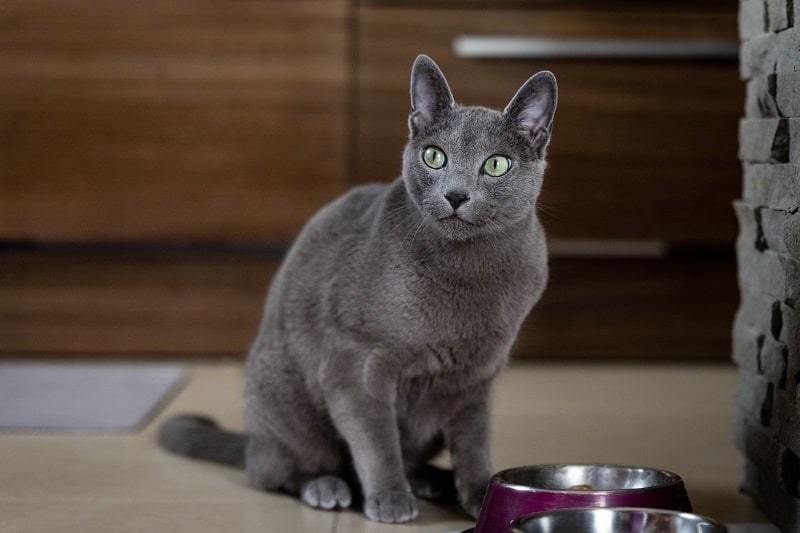
Health & Care
Russian Blues are a very healthy breed; unlike other purebred cats, they aren’t prone to genetic health conditions. However, thanks to their love of food, the biggest concern for this cat is obesity. The diet you choose for your pet is always important, but it’s crucial that you make the right choice when your cat is at a higher risk of weight loss.
If you are ever concerned about your cat’s weight, speak to your veterinarian before changing their diet. Russian Blues are relatively low maintenance when it comes to their care; they’re considered “hypoallergenic,” and while no animal is truly hypoallergenic, they tend to set off people’s allergies less than other breeds. Their coat requires very little upkeep; just make sure you give it a daily brush to stop it from matting. Weekly tooth brushing and ear inspections will reduce tartar buildup and alert you to ear infections.
Size
The Russian Blue is considered a medium-sized cat, but thanks to its fur, it can look bigger than it is. Compared to the British Shorthair, they are smaller and lighter.
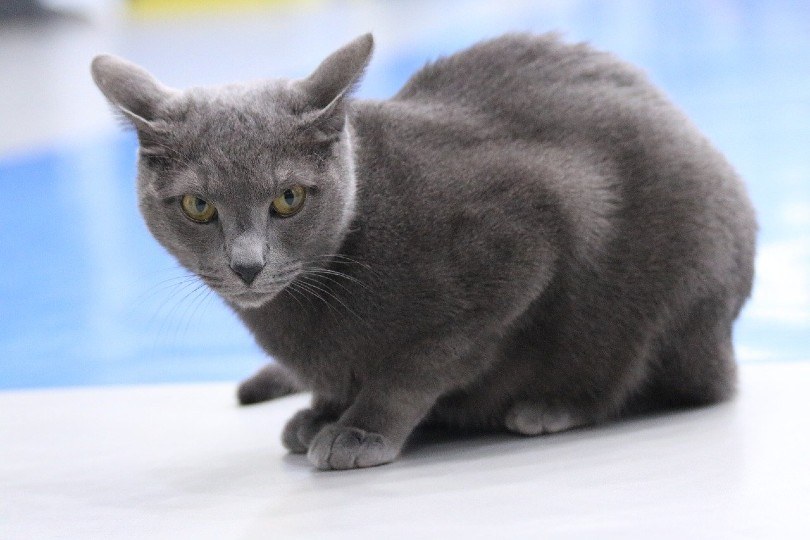
Suitable For:
The Russian Blue is suitable for a family with children and other pets, but if the kids are too rambunctious, this cat won’t get along with them. They are considered hypoallergenic, so if you are a pet lover with an allergy, they may cause fewer allergic reactions. They’re social, affectionate, loyal, and have a long lifespan, so while they are undemanding and low maintenance in many aspects, they will be part of your family for a very long time!
British Shorthair Overview
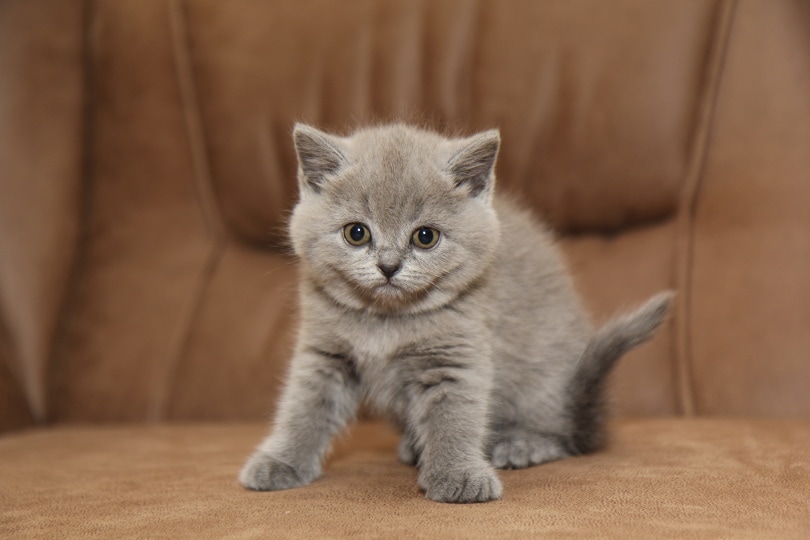
The British Shorthair is considered the oldest breed in Great Britain, and they started out as shorthaired street cats. During the war, the number of British Shorthairs decreased, and it’s believed breeders brought in other cats to expand the gene pool, and one of the cats mated with the British Shorthair was the Russian Blue. While this would not be allowed today, it’s understandable why both cats are so similar.
In 1871, the British Shorthair was one of the breeds to be exhibited in the first cat show. It wasn’t until the early 1900s that they would be brought to the States under a different name: Domestic Shorthairs. In 1980, the British Shorthair was recognized by the CFA.
Personality
The British Shorthair is placid, affectionate, and easy-going. They are fiercely loyal and will show affection to the entire family, including children and pets. While they are happy to be around children, they don’t like being picked up much, so it’s important to teach children how to act around them appropriately to avoid them becoming moody with being handled. They like attention, are active, and will seek out company if they want you to play with them, but they also enjoy being alone.
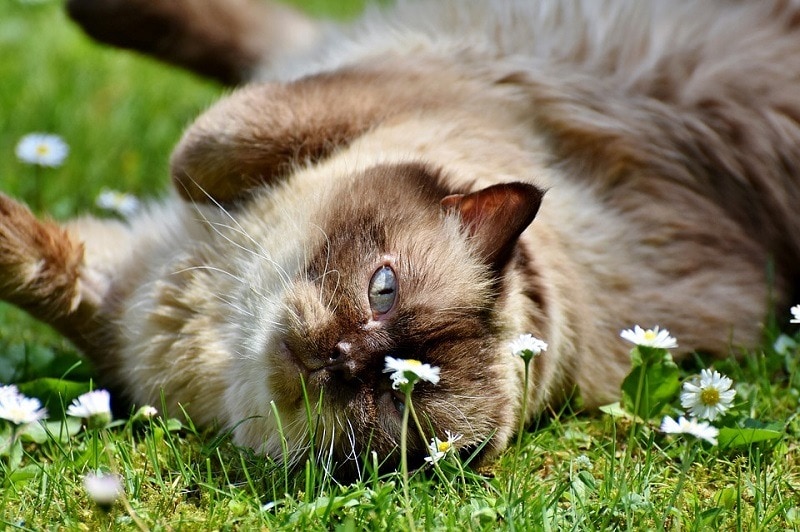
Health & Care
The British Shorthairs have long lifespans, so it’s clear they are healthy cats. However, there are some conditions they are prone to. Obesity is a risk for the British Shorthair, so just like with the Russian Blue, it’s important that you get their diet right to keep them from putting on weight.
In terms of care, you will have to brush the British Shorthair’s fur, check its ears, trim its nails, and clean its teeth weekly. This will keep them healthy and happy and ensure they are with you for a long time.
Size
British Shorthairs are one of the largest breeds. When they’re growing, you might notice they reach their full length before reaching their adult weight, making them look skinny. This is nothing to worry about, and as long as you are up to date on all your vet visits and your vet is happy with their progress, you shouldn’t be concerned.
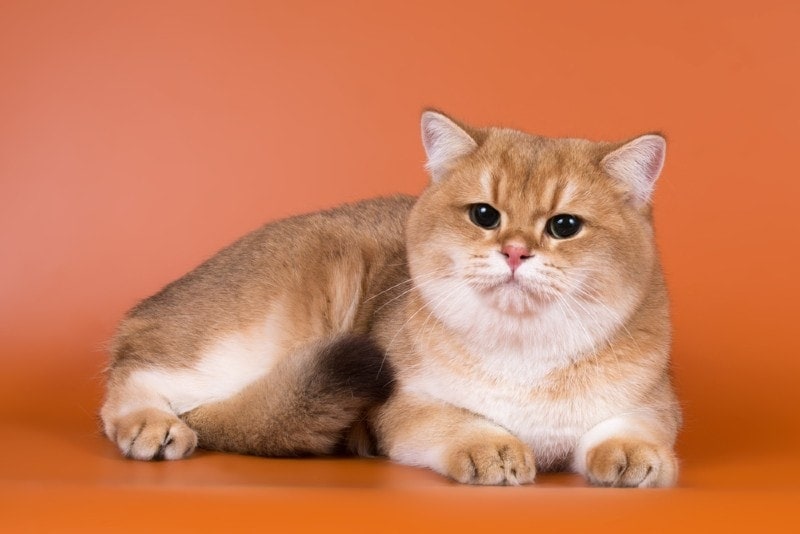
Suitable For:
The British Shorthair is a wonderful addition to families and single people alike. They get along with other pets and children, but they don’t like being handled a lot. They are easy-going cats and not particularly active, which can be problematic as they are prone to obesity. These cats also have a long lifespan, so when you bring one into your home, you make a very long-term commitment.
Which Breed Is Right for You?
The Russian Blue and British Shorthair are incredibly similar cats, and it’s understandable when you realize their genetic paths crossed in the past when the Russian Blue was brought in to help increase the British Shorthair’s numbers. So, how do you go about picking between these cats?
While they would both make wonderful additions to a family, the Russian Blue is more aloof and won’t spread out the love quite as evenly among the family as the British Shorthair will. Neither is particularly cuddly, but the British Shorthair is slightly more affectionate and more tolerant of younger children as long as you teach the kids how to act around them.
The Russian Blue is clingier to its favorite family member, and you’ll always have a best friend if you live alone. They are also considered hypoallergenic, while the British Shorthair is not, so they’re a better choice if you are an allergy sufferer. And while they both have long lifespans, the Russian Blue seems less prone to health problems as it ages. Regardless of the feline you select, the British Shorthair and Russian Blue bring affection, loyalty, and lots of love to a home!
See also:
- British Shorthair vs American Shorthair: What’s the Difference? (With Pictures)
- Chartreux vs British Shorthair: What’s the Difference? (With Pictures)
Featured Image Credit: Top – Russian Blue (Demian Tejeda-Benitez, Pexels) | Bottom – British Shorthair (Павел Карсаков, Pexels)







